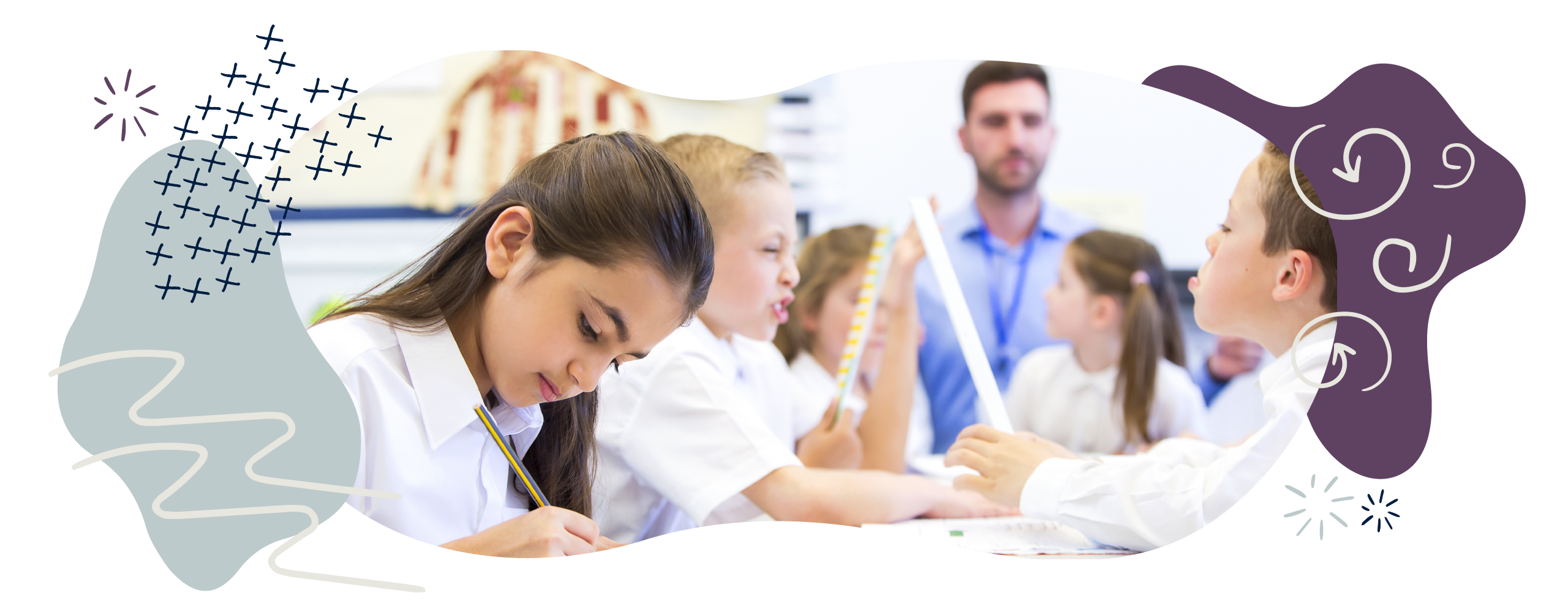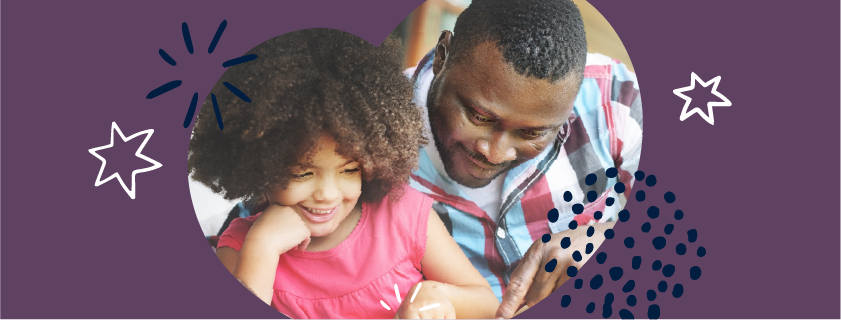Comprehension
Reading comprehension is the ability to read a text and understand its meaning.
The National Curriculum divides reading up into two closely linked skills: word reading and comprehension. Word reading is the name given to recognising the words on the page or screen. In English primary schools, phonics is often used to help children with this part of reading. But this is only half of the story – to make sense of what they’re reading, a child needs to be able to understand the words. This is called comprehension.
Comprehension is a key strand of the National Curriculum and is assessed in the Key Stage 1 SATs and Key Stage 2 SATs.
Video support
What is comprehension?
Find out how children build their understanding of a text using a combination of background knowledge, vocabulary, language structures, and inference.
Supporting comprehension at home
Find out how to best support your child’s reading comprehension at home using our top tips.
Comprehension at school
As part of learning to read, your child will learn about reading comprehension throughout their time at primary school. The focus will probably move more heavily towards comprehension and away from phonics from Year 2 onwards, as your child becomes more confident with word reading.
What your child will learn
Find out how your child will learn to read at school:
Reading comprehension: Age 3–4 (Early Years)
- listen to stories and sometimes join in, retelling them in their own words
- sing songs and simple rhymes.
Reading comprehension: Age 4–5 (Reception / Primary 1)
- listen to stories and retell favourites
- recite songs and rhymes (and come up with some of their own).
Reading comprehension: Age 5–6 (Year 1 / Primary 2)
- listen to and talk about a range of stories and texts
- know and understand well-known stories, fairy stories, and traditional tales
- understand books they can read and listen to.
- discuss the meaning of the words they read
- begin to infer (read between the lines) the feelings of characters
- discuss the books they have read
- explain what happened in a story, or the main topic in non-fiction
- make connections between the story and their own life.
Reading comprehension: Age 6–7 (Year 2 / Primary 3)
- listen to and talk about a range of stories and texts
- understand both the books they can already read themselves and those they listen to
- talk about books and poems, taking turns and listening to what others say.
- discuss the meaning of the words they read and make connections between new words and the words they already know
- discuss the words and phrases they like in a story
- talk about the way a non-fiction book is structured (headings, photographs, captions, contents page and so on)
- check that they have read a story correctly by spotting if it doesn’t make sense
- predict what is going to happen next based on what has happened so far
- infer the feelings and motivations of characters
- discuss the books they have read.
Reading comprehension: Age 7–8 (Year 3 / Primary 4)
By Year 3, most of the hard work of learning to read has been done. The main focus moves on to comprehension and building the habits that make a confident and keen reader. Your child will learn to:
- read a wide range of books and retell some stories orally
- read aloud and perform poems and play scripts
- talk about interesting words and phrases
- read between the lines and use evidence from the text when giving their opinion
- predict what might happen next
- use dictionaries to check the meaning of words.
- talk about the structure of non-fiction books
- spot themes (recurring ideas) in a book
- ask questions about a book to help them to understand it
- summarise the information or plot in a book
- make inferences (read between the lines) about a character’s behaviour, motivation or feelings.
Reading comprehension: Age 8–9 (Year 4 / Primary 5)
In Year 4, your child will be growing ever more confident as an independent reader. They will develop their comprehension skills and build the habits that make an enthusiastic reader. Your child will learn to:
- read a wide range of books and retell some stories
- talk about interesting words and phrases
- predict what might happen next
- talk about books and poems, take turns, and listen to what others say
- use dictionaries to check the meaning of words.
- talk about the structure of non-fiction books
- spot themes (recurring ideas) in a book
- ask questions about a book to help them to understand it
- summarise the information or plot in a book
- make inferences (read between the lines) about a character’s behaviour, motivation or feelings.
Reading comprehension: Age 9–10 (Year 5 / Primary 6)
In Year 5, your child will continue to develop their comprehension skills and build the habits that make a confident and enthusiastic reader. Your child will learn to:
- read and talk about a wide range of fiction, poetry, plays, non-fiction, and reference books
- recommend books to their friends, giving reasons for their choices
- talk about themes in the books they read and make comparisons between them
- learn a range of poetry by heart and read poems and playscripts aloud with expression
- talk about how (and why) authors use language.
- talk about the structure of non-fiction books
- check that the book makes sense to them as they read it
- spot themes (recurring ideas) in a book
- compare different books that they have read
- ask questions about a book to help them to understand it
- summarise the information or plot in a book and explain what they have read to another person
- make inferences (read between the lines) about a character’s behaviour, motivation or feelings
- ask questions about a text to help their understanding and engagement such as ‘Where is this set?’ or ‘Why did she do that?’
- distinguish between facts and opinions
- locate information in non-fiction books and use this information elsewhere.
Reading comprehension: Age 10–11 (Year 6 / Primary 7)
In Year 6, your child will continue to develop as a reader, becoming increasingly independent as they prepare for secondary school. Your child will learn to:
- identify how the language, structure, and presentation of a text contributes to its meaning
- talk about how (and why) authors use language
- tell the difference between fact and opinion and find information from non-fiction texts
- talk about books, building on their own ideas and other people’s
- talk about what they have read, including through presentations and debates.
- talk about the structure of non-fiction books
- check that the book makes sense to them as they read it
- spot themes (recurring ideas) in a book
- compare different books that they have read
- ask questions about a book to help them to understand it
- summarise the information or plot in a book and explain what they have read to another person
- make inferences (read between the lines) about a character’s behaviour, motivation or feelings
- ask questions about a text to help their understanding and engagement such as ‘Where is this set?’ or ‘Why did she do that?’
- distinguish between facts and opinions
- locate information in non-fiction books and use this information elsewhere.
There is much more to reading than seeing a word and saying it out loud. Much, much more! When we read a book, we might be doing any number of the following tasks:
-
- Understanding the meaning of new or tricky vocabulary
- Understanding the key elements of a story such as character and setting in a story, or the main purpose of a non-fiction book
- Summarising the key events
- Making inferences (reading between the lines) about a character’s feelings, actions, behaviour or motivation
- Predicting what will happen next
- Finding information in a text
- Comparing the book to other books we have read, or comparing different characters or their behaviour, or linking information with something we already know
- Appreciating the language choices an author has made or the way the information is presented.

